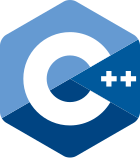







































A place to experiment with vectors and see what various operations do.
#include <iostream>
#include <vector>
using namespace std;
ATestType is a type with copy control that also prints when its copy control members are called so we can track their usage.
class ATestType {
friend ostream& operator<<(ostream& os, const ATestType& t);
public:
ATestType(char c, int i) : id(c), iptr(new int(i)) {}
Copy constructor: copies the storage pointed to by iptr for the new object.
ATestType(const ATestType& source) {
id = source.id;
cout << "In ATestType copy constructor for " << id << endl;
iptr = new int(*(source.iptr));
}
Destructor: deletes the storage pointed to by iptr.
~ATestType() {
cout << "In ATestType destructor for " << id << endl;
delete iptr;
}
int get_val() { return *iptr; }
void set_val(int n) { *iptr = n; }
private:
char id;
int* iptr;
};
ostream& operator<<(ostream& os, const ATestType& t) {
os << "|ATestType " << t.id << " has val " << *(t.iptr) << "|";
return os;
}
Print a vector of Streamable, where Streamable must be a type that implements the stream output operator.
template <typename Streamable>
void print_vector(ostream& os, vector<Streamable> vec) {
for (auto& mbr : vec) {
os << mbr << ' ';
}
os << endl;
}
void section_head(const string& s) {
cout << "\n***********************\n";
cout << s << endl;
}
We can see that by using emplace_back() for att2, we save one call to the copy constructor.
int main() {
vector<int> ivec{5, 6, 7, 8};
print_vector(cout, ivec);
ATestType att1{'1', 16};
ATestType att2{'2', 32};
vector<ATestType> att_vec;
section_head("Pushing back att1");
att_vec.push_back(att1);
section_head("Emplacing back att2");
att_vec.emplace_back(att2);
section_head("Printing att vec");
print_vector(cout, att_vec);
section_head("Clearing the att vector");
att_vec.clear();
section_head("Exiting program");
}